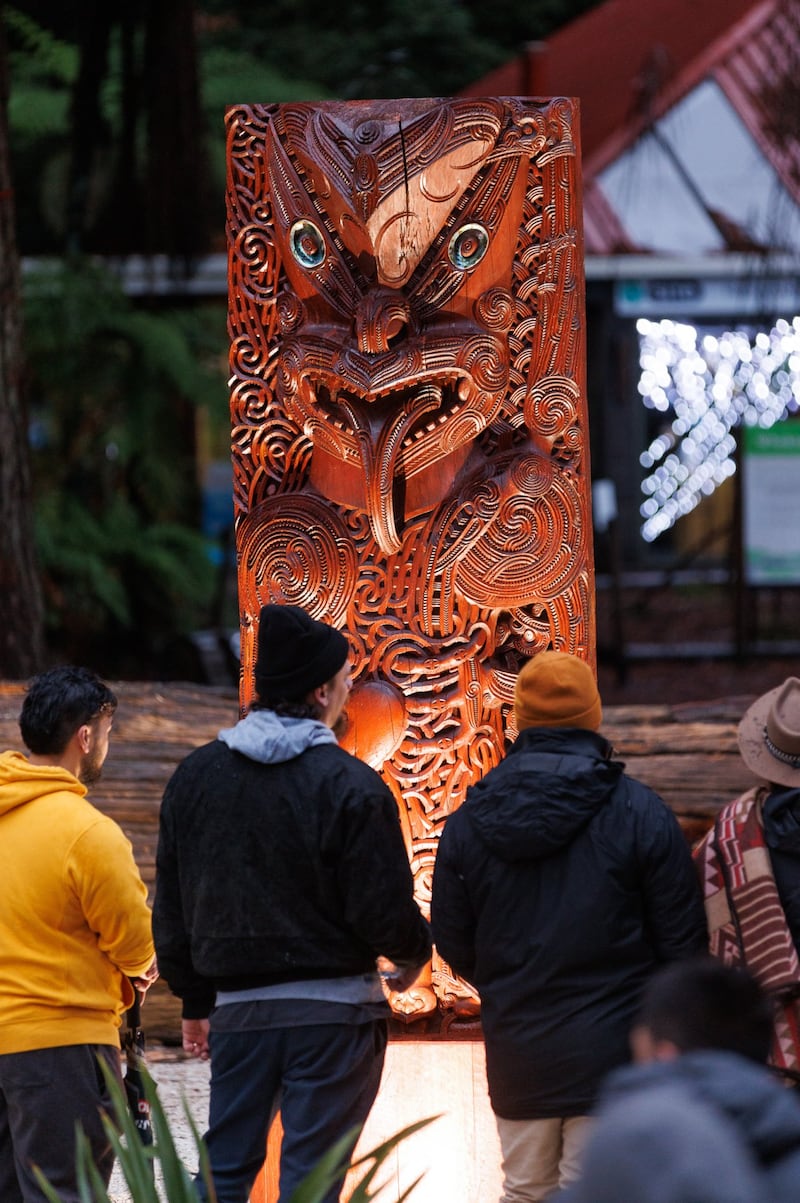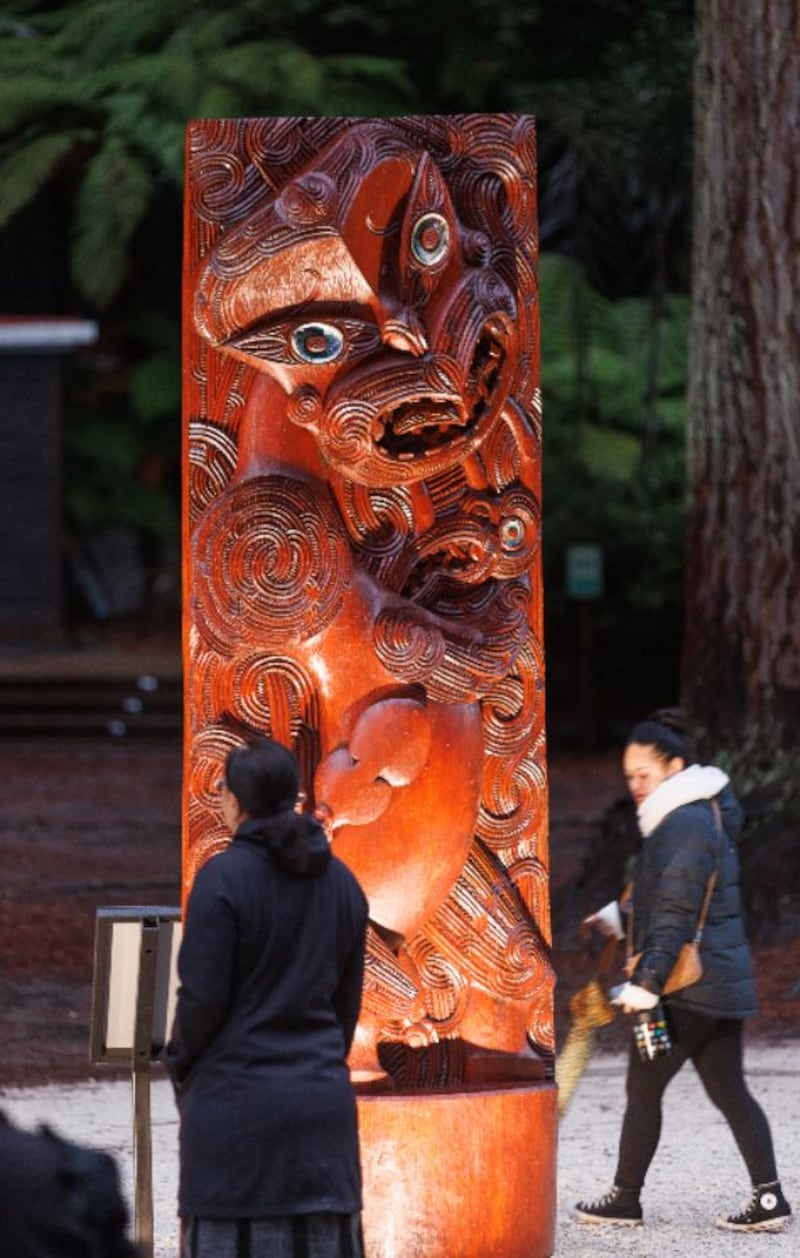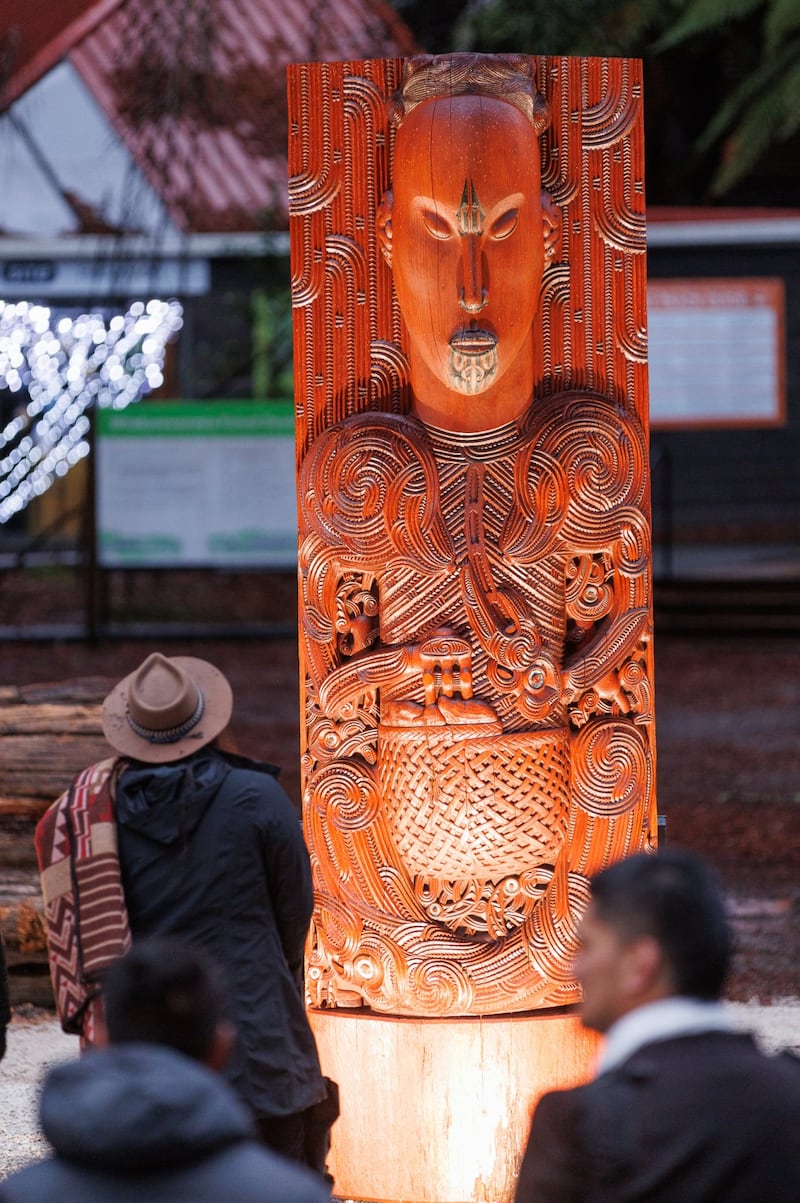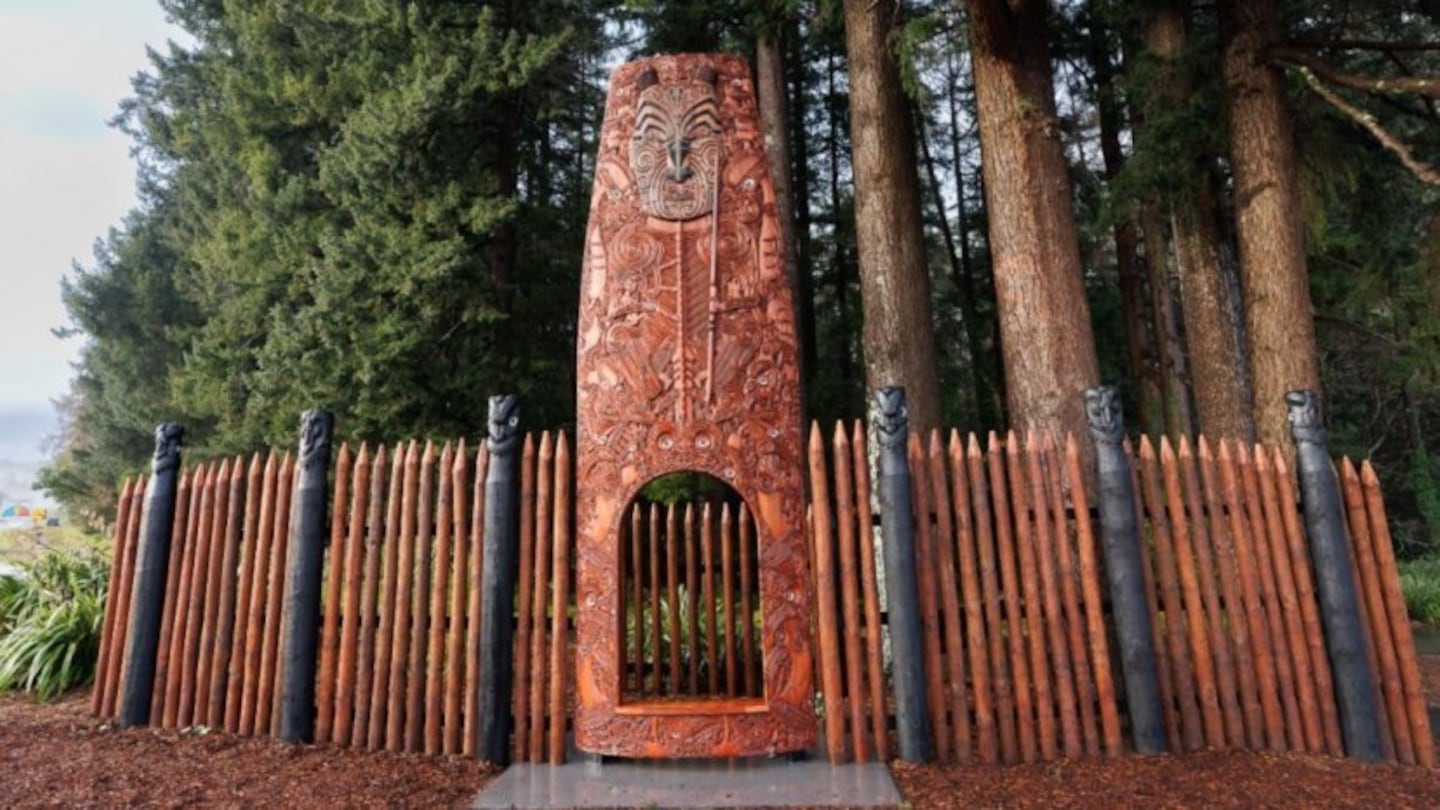Tuteata carved by Grant Hamarama Smith Marunui, Kawana Waititi and Haami Te Aho. Photo / Supplied
Four pou whenua unveiled in Rotorua on Saturday morning as part of the Whakarewarewa forest development project have been described by local mayor Steve Chadwick as "a beautiful way to welcome manuhiri to the forest".
Ngā Hapū e Toru o Ngāti Whakaue (Ngāti Hurungaterangi, Ngāti Taeotu, Ngāti Te Kahu) led today's dawn ceremony at Tītokorangi.
Ngā Hapū e Toru trustee, Hokimatemai Kahukiwa, said whakapapa ties the three hapū to the land and the pou whenua represent their tūpuna and descent from Tuteata who held mana over Tītokorangi.
The pou whenua named Tuteata, Hurungaterangi, Taeotu and Te Kahu were unveiled in partnership with CNI Iwi Holdings Ltd, Rotorua Lakes Council, and Kānoa - Regional Economic Development & Investment Unit.
In a statement, Rotorua Council provided details about each of the pou whenua.
Tuteata (pictured above), located at the start of Tītokorangi Drive, was carved by Grant Hamarama Smith Marunui (Ngāti Hurungaterangi, Ngāti Te Kahu, Ngāti Rangiteaorere, Ngāti Rongomai, Ngāti Manawa and Ngāti Rangitāne), Kawana Waititi (Te Whānau-a-Apanui) and Haami Te Aho (Ngāti Porou, Ngāti Kahungunu).
"This Kūwaha (doorway) represents Tuteata and his wife Hapuriri.
"Tuteata was the great-grandson of Rangitihi. Rangitihi was the father of Ngā Pū Manawa e Waru – eight key ancestors of Te Arawa. It was carved with wood from the Tōtara tree."
The three other pou were unveiled outside the Redwoods Visitor Centre.
Hurungaterangi was carved by Grant Hamarama Smith Marunui.
"Hurungaterangi is the ancestor of Ngāti Hurungaterangi. His wife Whaingārangi is depicted on his body as a manaia figure."

Hurungaterangi. Photo / Supplied
"This pou shows the take toa – rights to land that are strengthened through battle. The patterns around Hurungaterangi tell the story of how he avenged the death of his father, Whatumairangi. The background pattern is Makawe, a celestial being who led Hurungaterangi. You can also see the shape of a Tōrea, the bird that also guided him."
Taeotu was carved by Shannon Wafer (Āti Awa, Taranaki, Ngā Puhi) and Grant Hamarama Smith Marunui.
"The wives of Taeotu, Paretuhi and Te Pū, are shown at the top of this carving. Ngāti Taeotu is the hapū that come from Taeotu and Paretuhi.

Taeotu. Photo / Supplied
"The pou illustrates the prowess of Taeotu as a warrior. He is holding a kotiate (weapon) which in Māori terms represents take toa – bravery, and rights to land that are strengthened through battle and the power to make war or peace."
Te Kahu was carved by Grant Hamarama Smith Marunui.
"Te Kahu is the ancestor of Ngāti Te Kahu. Five generations after Tuteata and Hapuriri, their descendant Te Kahu was born."

Te Kahu. Photo / Supplied
"Te Kahu had a husband named Kōhuru of Ngāti Tūmatawera. Te Kahu and Kōhuru lived in the area around the Pohutu Geyser at Whakarewarewa."
"This pou reflects the nurturing from this land which was rich in birdlife, plants and food. There are waewae tōrea patterns, which represent the bird in flight, as well as ritorito which represent the shoots of harakeke (flax bushes)."



